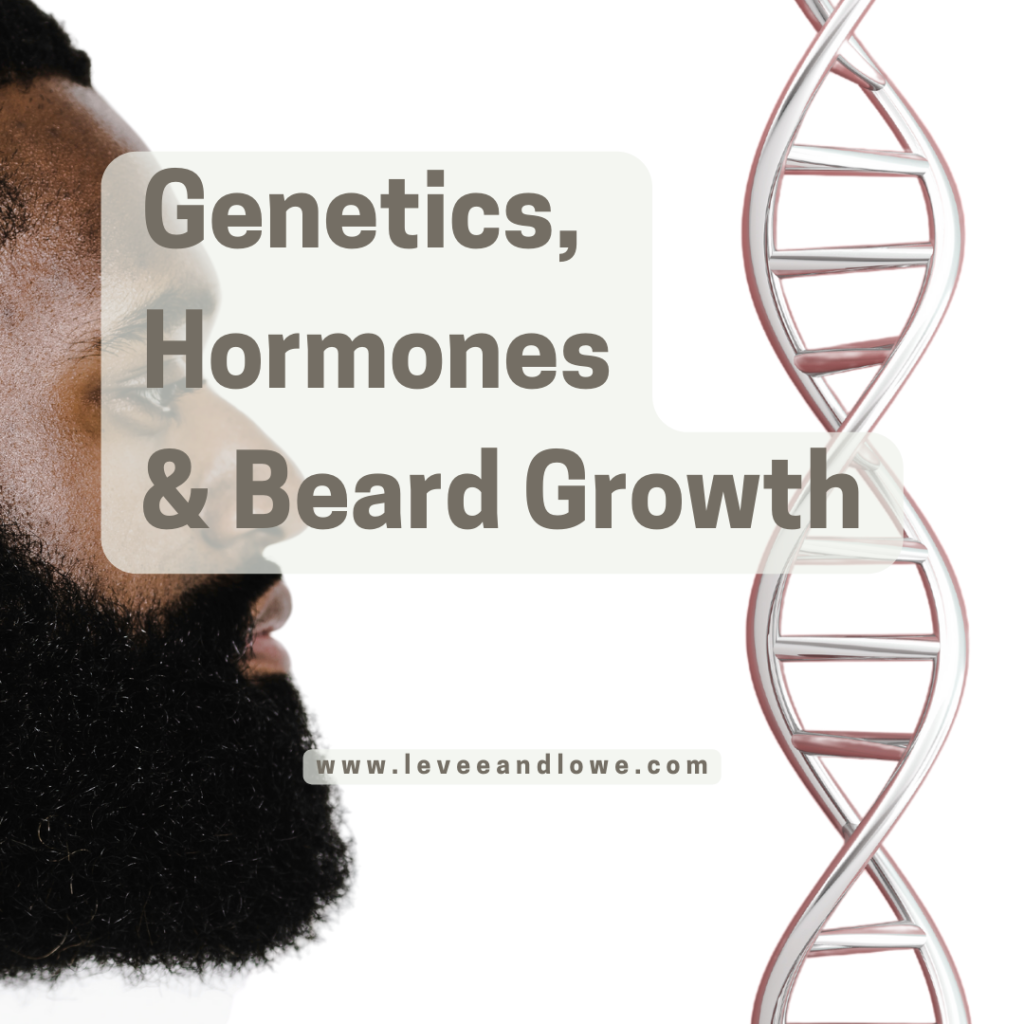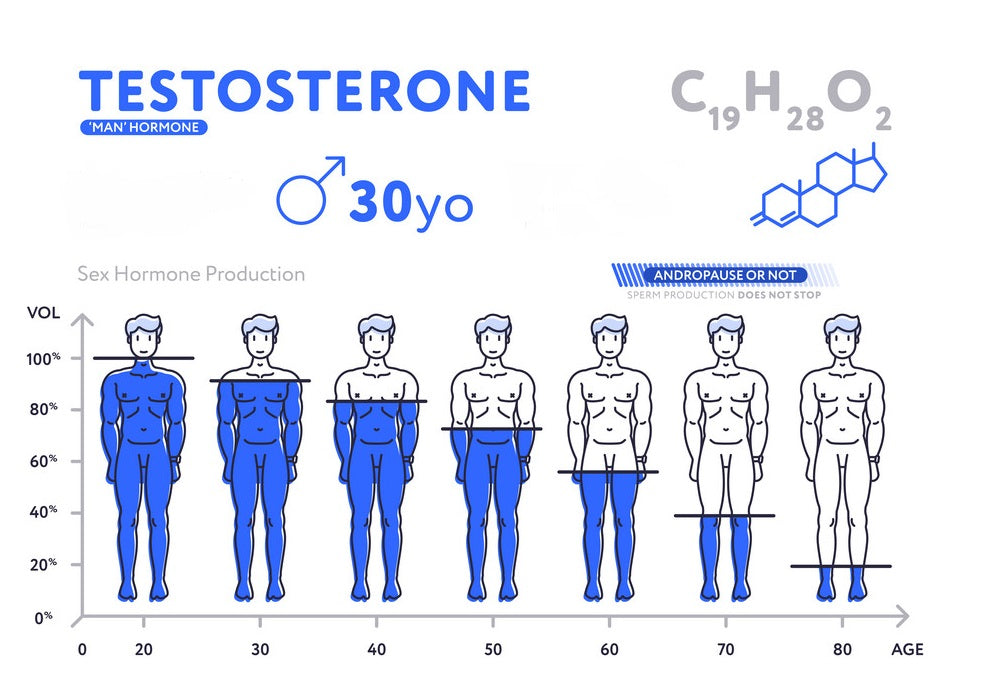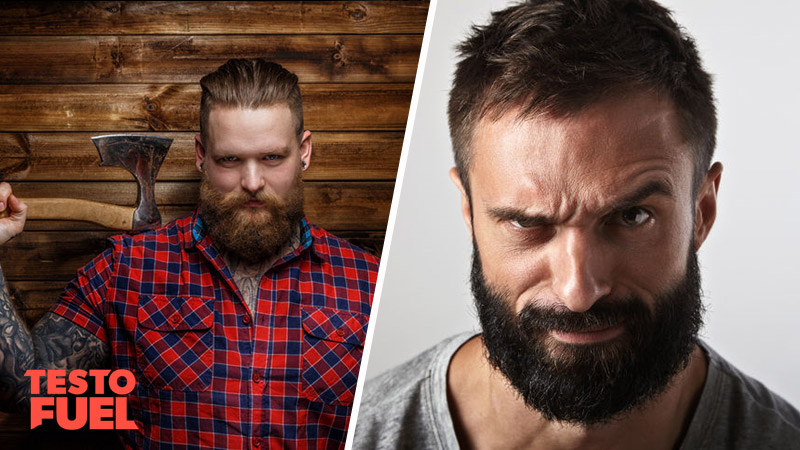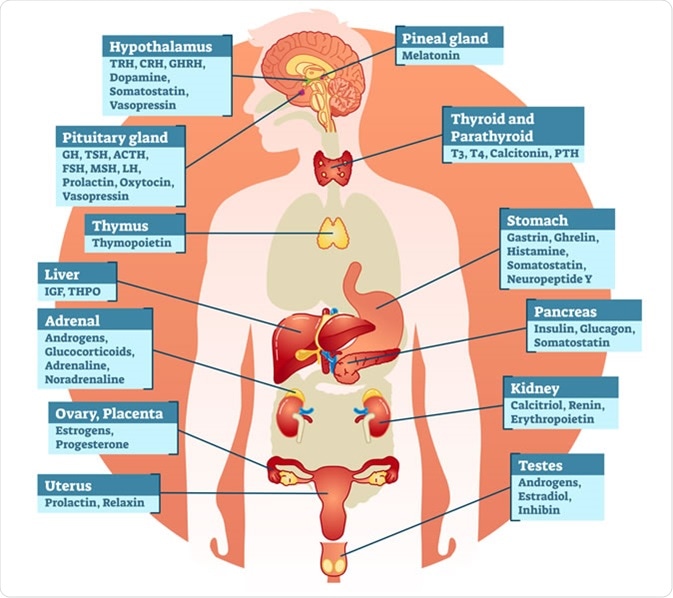If you’ve ever wondered how hormones affect beard growth, you’re in the right place! At BeardsDude.com, we delve into the science behind the growth of those luscious facial locks. Our expert guides will take you through the role of testosterone in promoting beard growth and how other hormones, such as DHT, estrogen, and progesterone, influence the speed and thickness of your beard.
But that’s not all. We go beyond the biology and explore how hormone imbalances can impact beard growth. From conditions like Polycystic Ovary Syndrome (PCOS) to thyroid disorders, we break down the complex relationship between hormones and beard growth. We even provide tips and solutions for those facing challenges due to hormonal issues.
So, whether you’re trying to understand why some men have thick, full beards while others struggle with patchiness, or if you’re simply curious about the fascinating world of hormones and their impact on your beard, get ready to dive into our detailed articles and expert advice. Because at BeardsDude.com, we’re here to help you grow and maintain that epic beard you’ve always wanted.

The Basics of Beard Growth
Beard growth is a complex process that is influenced by various factors, including genetics, hormones, and lifestyle choices. In this article, we will focus on the role of hormones in beard growth. Hormones play a crucial role in the development and maintenance of facial hair. Understanding how hormones affect beard growth can help you gain insights into your own beard journey and make informed decisions about your grooming routine.
Anatomy of Hair Follicles
To understand how hormones affect beard growth, it is important to first understand the anatomy of hair follicles. Hair follicles are small structures located in the dermis, or the second layer of the skin. Each hair follicle contains a bulb at its base, which is connected to blood vessels that supply essential nutrients and hormones for hair growth.
Within the hair follicle, there are specialized cells called matrix cells. The matrix cells are responsible for producing hair cells, which are rapidly divided and pushed upwards, forming the hair shaft that we see above the skin’s surface. The rate of cell division in the matrix cells determines the speed of hair growth.
The Hair Growth Cycle
Hair growth occurs in cycles, consisting of three phases: anagen, catagen, and telogen. The anagen phase is the active growth phase, during which the hair follicle is actively producing new hair cells. This phase lasts for several years and determines the length of the hair.
The catagen phase is a transitional phase, during which the hair follicle shrinks and detaches from the blood supply. This phase lasts for a few weeks.
The telogen phase is the resting phase, during which the hair follicle remains dormant, and the hair strand eventually falls out. This phase lasts for a few months before a new anagen phase begins and the cycle repeats.
The duration of each phase can vary between individuals and can be influenced by factors such as genetics, hormones, and overall health. Hormones, in particular, play a crucial role in regulating the growth cycle of hair follicles.
Understanding Hormones
Hormones are chemical messengers that regulate various physiological processes in the body, including hair growth. Two hormones that play a significant role in beard growth are testosterone and dihydrotestosterone (DHT).
Role of Testosterone
Testosterone is the primary male sex hormone responsible for the development of male characteristics, including facial hair growth. During puberty, testosterone production increases significantly, triggering the growth of facial hair.
Testosterone is produced by the testes in males and by the ovaries and adrenal glands in females, although in much smaller amounts. In males, testosterone is converted to a more potent form called dihydrotestosterone (DHT) in certain tissues, including hair follicles.
Effects of DHT on Beard Growth
Dihydrotestosterone (DHT) is derived from testosterone and is responsible for the masculinization of facial hair. DHT binds to androgen receptors in hair follicles, stimulating the growth of thick, coarse hair. This is why facial hair tends to be denser, longer, and darker in adult males compared to females.
However, the conversion of testosterone to DHT is not always beneficial for beard growth. In some individuals, excessive production of DHT can lead to hair loss in certain areas, such as the scalp, while promoting hair growth in other areas, such as the face. This is known as male pattern baldness or androgenetic alopecia.

Puberty and Beard Growth
Hormonal Changes During Puberty
Puberty is a stage of rapid physical development, characterized by hormonal changes that trigger various secondary sexual characteristics, including the growth of facial hair. During puberty, the body increases its production of testosterone, which stimulates the development of facial hair.
The timing and extent of beard growth during puberty can vary between individuals. Some boys may start growing facial hair as early as 12 years old, while others may not see significant growth until their late teens.
Beard Growth in Adolescents
In adolescents, beard growth may initially appear patchy, with hair follicles in certain areas being more active than others. This is due to the fact that hair follicles develop and mature at different rates. As adolescents progress through puberty, their beard growth tends to become more even and dense.
It is important to note that the rate of beard growth during puberty does not necessarily indicate how thick or dense a person’s beard will be in adulthood. Beard growth continues well beyond puberty, and individuals may experience significant changes in their facial hair density and pattern throughout their late teens and early adulthood.
Hormone Imbalances and Beard Growth
In addition to puberty, hormone imbalances can also affect beard growth in adults. Certain medical conditions and hormonal disorders can disrupt the normal hormonal balance in the body, leading to changes in facial hair growth.
Conditions that Affect Hormone Levels
Certain medical conditions and lifestyle factors can affect hormone levels and, consequently, beard growth. For example, conditions such as polycystic ovary syndrome (PCOS) in women and hypogonadism in men can lead to hormonal imbalances that can affect beard growth.
Furthermore, factors such as obesity, stress, and poor overall health can also contribute to imbalances in hormone levels, potentially affecting beard growth.
Effects of Hormonal Disorders on Beard Growth
Hormonal disorders can disrupt the normal hormonal regulation of hair growth, leading to changes in beard growth patterns. For example, individuals with androgenetic alopecia, a condition characterized by the progressive thinning of scalp hair, may experience increased facial hair growth as a compensatory response to the loss of scalp hair.
On the other hand, conditions such as hypothyroidism, in which the thyroid gland does not produce enough thyroid hormones, can lead to thinning or loss of facial hair.
If you suspect that a hormonal disorder is affecting your beard growth, it is important to consult with a healthcare professional who can provide an accurate diagnosis and appropriate treatment options.

Enhancing Beard Growth with Hormonal Therapies
While genetics and hormone levels are the primary determinants of beard growth, there are various hormonal therapies available that can potentially enhance beard growth in individuals with suboptimal facial hair.
Topical Hormone Treatments
Topical hormone treatments, such as minoxidil, are commonly used to stimulate hair growth in individuals experiencing hair loss. Although minoxidil is primarily marketed for scalp hair regrowth, some individuals have reported increased facial hair growth as a side effect.
However, it is important to note that the use of topical hormone treatments for enhancing beard growth is not without risks. It is essential to consult with a healthcare professional before initiating any hormonal therapy to ensure its safety and efficacy.
Systemic Hormone Therapy
Systemic hormone therapy involves the administration of hormones, such as testosterone, to individuals with low hormone levels. This type of therapy is commonly used in individuals with hypogonadism, a condition characterized by reduced or absent sex hormone production.
Systemic hormone therapy has been shown to promote beard growth in individuals with low testosterone levels. However, it is important to note that systemic hormone therapy has potential side effects and should only be administered under the supervision of a healthcare professional.
Natural Ways to Boost Hormonal Activity for Beard Growth
If you are looking to naturally boost hormonal activity for beard growth, certain lifestyle choices can play a role in supporting healthy hormone levels.
Diet and Nutrition
A balanced diet that includes essential nutrients can support healthy hormone production. Foods rich in vitamins, minerals, and proteins, such as lean meats, fish, fruits, vegetables, and whole grains, can help promote optimal hormone levels.
In particular, foods rich in zinc, copper, vitamin D, and B vitamins are believed to support healthy hormone production and promote hair growth.
Exercise and Physical Activity
Regular physical activity can support healthy hormone levels by reducing stress and promoting overall well-being. Engaging in exercises, such as weightlifting or high-intensity interval training (HIIT), has been shown to boost testosterone levels in males.
However, it is important to note that excessive exercise or overtraining can have the opposite effect, leading to hormonal imbalances and potentially affecting beard growth.
Reducing Stress and Sleep
Stress and lack of sleep can disrupt the normal hormonal balance in the body, potentially affecting beard growth. Engaging in stress-reducing activities, such as meditation, yoga, or spending time in nature, can help support healthy hormone levels.
Adequate sleep is also crucial for maintaining optimal hormone production. Aim for around 7-9 hours of quality sleep per night to support healthy beard growth.

Genetics and Hormonal Influence on Beard Growth
While hormones play a crucial role in beard growth, genetics also play a significant role in determining the thickness, density, and pattern of facial hair.
The Role of Genetics
Genetics determine the number, size, and sensitivity of androgen receptors in hair follicles, which affects how strongly hormones like testosterone and DHT bind to these receptors. This, in turn, influences the growth and quality of facial hair.
If your family members, particularly your father and grandfathers, have thick and full beards, there is a good chance that you will also have the genetic potential for a similar beard.
Hormonal Factors Influencing Beard Growth
While genetics provide the blueprint for beard growth, hormones determine how effectively that blueprint is expressed. Hormonal imbalances or deficiencies can affect beard growth, even in individuals with a genetic predisposition for thick facial hair.
For example, individuals with low levels of testosterone or impaired androgen receptor sensitivity may have difficulty growing a thick, dense beard, even if they have the genetic potential for it.
Conversely, individuals with high levels of DHT or increased androgen receptor sensitivity may experience excessive facial hair growth, leading to conditions such as hirsutism in women or hypertrichosis in men.
Beard Growth Myths and Misconceptions
There are several myths and misconceptions surrounding beard growth that are important to address.
Can Shaving or Trimming Stimulate Beard Growth?
Contrary to popular belief, shaving or trimming does not stimulate beard growth. The rate and quality of beard growth are primarily determined by genetics and hormone levels, not by external factors such as shaving.
Shaving or trimming can make the beard appear fuller and thicker by removing split ends and promoting a healthier overall appearance. However, it does not affect the rate of hair growth or the density of facial hair follicles.
Do Beard Growth Products Work?
There are numerous beard growth products available in the market that claim to enhance beard growth. While some of these products may contain ingredients that contribute to a healthy beard, such as essential oils and vitamins, there is limited scientific evidence to support their efficacy in stimulating beard growth.
It is important to approach these products with caution and skepticism. If you are considering using beard growth products, it is advisable to consult with a healthcare professional or a trusted dermatologist to ensure their safety and effectiveness.
Is Beard Growth Permanent?
Once facial hair has fully developed, beard growth is generally considered permanent. However, the rate of beard growth and the density of facial hair follicles may change over time due to various factors, including age, hormonal changes, and overall health.
Furthermore, some individuals may experience patchy or uneven beard growth, which can give the illusion of inconsistent growth patterns. In such cases, maintaining a well-groomed and trimmed beard can help create the appearance of a fuller, more evenly distributed beard.
Maintaining a Healthy Beard
Regardless of your beard growth pattern, maintaining a healthy beard is essential for its overall appearance and well-being. Here are a few tips for proper beard grooming:
Proper Grooming Techniques
Regular grooming is crucial for maintaining a healthy and well-kept beard. This includes washing your beard with a gentle cleanser, conditioning it with beard oil or balm, and brushing or combing it regularly to remove tangles and distribute natural oils.
When trimming your beard, use sharp scissors or a trimmer to maintain an even length and shape. Consider visiting a professional barber for more complex trimming and shaping needs.
Using Beard Care Products
Using beard care products, such as oils, balms, waxes, and conditioners, can help nourish and moisturize your facial hair and the underlying skin. These products can improve the overall appearance and health of your beard, making it softer, shinier, and more manageable.
Choose products that are specifically designed for beard care and contain natural ingredients that promote healthy hair growth and moisturize the skin.
Dealing with Common Beard Growth Issues
While growing a beard can be an exciting journey, it is not without its challenges. Here are a few common issues that individuals may encounter during their beard growth process:
Patchy Beard Growth
Patchy beard growth is a common concern for many individuals. It is characterized by uneven hair growth, with certain areas of the beard being denser than others. This can create an inconsistent or unkempt appearance.
While genetics and hormone levels largely determine the density and distribution of facial hair follicles, certain lifestyle choices can help promote even beard growth. Regular grooming, including brushing or combing, can help train the hair to grow in a more uniform manner. Additionally, maintaining a healthy diet and lifestyle, as discussed earlier, can support optimal hormone levels and facilitate healthy beard growth.
Beard Itching and Dandruff
Beard itching and dandruff are common issues that individuals may experience during beard growth. These issues can be caused by dry skin, inadequate beard hygiene, or underlying skin conditions such as seborrheic dermatitis.
To alleviate beard itching and dandruff, it is important to maintain proper beard hygiene. Wash your beard regularly with a gentle cleanser and apply a beard oil or balm to moisturize both the hair and the underlying skin.
If beard itching and dandruff persist or worsen, consult with a dermatologist who can provide a proper diagnosis and recommend appropriate treatment options.
The Psychological Impact of Beard Growth
Growing and maintaining a beard can have a profound psychological impact on individuals.
Perception of Masculinity
For many men, growing a beard is associated with masculinity and a sense of identity. A well-groomed, thick beard can contribute to a perceived image of strength, virility, and maturity. This can boost self-confidence and enhance feelings of masculinity.
However, it is important to note that masculinity can be interpreted and expressed in various ways, and growing a beard is a personal choice. It is crucial to embrace and respect diverse expressions of masculinity and not judge or compare oneself based on societal ideals or norms.
Boosting Confidence
A well-groomed beard can enhance self-confidence and self-esteem. It can serve as a personal style statement and give individuals a sense of uniqueness and individuality. The act of caring for and maintaining a beard, particularly when it becomes an integral part of one’s personal grooming routine, can promote a sense of pride and boost overall confidence.
Social Interactions
Growing a beard can also impact social interactions. A well-groomed and maintained beard can attract attention and serve as a conversation starter. This can facilitate social connections, build camaraderie, and create a sense of belonging within communities or groups that celebrate facial hair.
However, it is important to note that perceptions of beards can vary across cultures and individuals. Some individuals may have personal or cultural preferences that influence their opinions regarding facial hair. It is important to respect and honor individual choices and preferences.
Cultural and Historical Significance of Beards
Beards have held cultural and historical significance throughout human history, with different societies and eras ascribing different meanings to facial hair.
Beards in Different Cultures
Beards have played various roles across different cultures. In some cultures, beards are highly valued and seen as a symbol of wisdom, masculinity, and religious devotion. For example, in Sikhism, men are required to maintain uncut facial hair as a sign of spiritual commitment and identity.
In other cultures, beards may have different connotations. For instance, in certain Western societies, beards were historically associated with rebellion or nonconformity, while in some professional settings, being clean-shaven was considered more acceptable.
Beards Throughout History
Throughout history, beards have been and continue to be a prominent feature in various civilizations. In ancient Egypt, beards were associated with divinity and believed to symbolize power and status. In ancient Greece and Rome, beards were seen as a sign of masculinity and wisdom.
During the Middle Ages, beards were highly valued and often portrayed in art and literature as a symbol of masculinity and authority. However, during the Renaissance and the following centuries, beards fell out of fashion in European societies, and being clean-shaven became the norm.
It was not until the 19th century that beards regained popularity, marking a shift towards a more natural, masculine aesthetic. Today, beards continue to be a significant cultural and fashion statement, with various styles and trends reflecting individual expression and personal style.
Case Studies: Real-Life Experiences of Beard Growth
To provide insights into different beard growth journeys, here are a few real-life case studies of individuals who have experienced diverse experiences with their facial hair.
Success Stories
John, a 25-year-old man, had struggled with patchy beard growth throughout his early adulthood. Frustrated with his uneven beard, he decided to maintain a shorter beard style and focus on proper grooming techniques. Over time, John noticed that his beard became thicker and more even due to regular grooming and improved overall health.
On the other hand, Michael, a 35-year-old man, had always wanted a full, dense beard but struggled to achieve significant growth throughout his twenties. After consulting with a healthcare professional, Michael discovered that his low testosterone levels were affecting his beard growth. He started testosterone replacement therapy, and over several months, he experienced noticeable improvement in his beard density and overall hair growth.
Challenges Faced
Not all individuals have a smooth beard growth journey. Some individuals may face challenges such as slow or uneven growth, patchiness, or difficulties maintaining a healthy beard.
Sarah, a 28-year-old woman, decided to embrace her natural facial hair and grew a beard after noticing sparse but persistent growth throughout her twenties. While she received support and acceptance from her close friends and family, Sarah faced judgment and criticism from some people in public spaces. However, she remained confident in her choice and continued to celebrate her unique beard journey.
Conclusion
Hormones play a crucial role in beard growth, influencing the thickness, density, and pattern of facial hair. Understanding how hormones affect beard growth can help individuals make informed decisions about their grooming routines, seek appropriate treatments if necessary, and embrace their unique beard journeys.
At BeardsDude.com, we celebrate the multifaceted world of beards and provide a wealth of information, tips, and insights to support individuals at every stage of their beard growth journey. Whether you are just starting your beard journey or looking for inspiration and guidance to maintain a healthy and well-groomed beard, our community is here to support you.
So, join us at BeardsDude.com, and let’s embark on a journey of self-discovery, self-expression, and beard love together!
